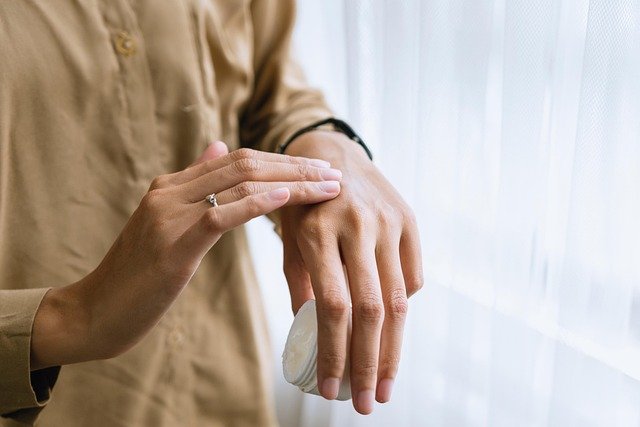Sustainable material choices for long-lasting interiors
Practical material choices shape how long interiors last and how they interact with outdoor spaces. This article explains sustainable options, maintenance considerations, and simple DIY approaches that support durability, indoor comfort, and environmental responsibility.

Sustainable material choices influence longevity, indoor comfort, and how interiors relate to outdoor landscaping and planting. Selecting materials with lower environmental impact, higher durability, and easier maintenance reduces renovation frequency and supports healthier indoor air. This article examines practical choices and planning considerations that balance aesthetics, function, and sustainability without relying on speculative claims.
How do landscaping and planting affect interior materials?
Materials chosen for interiors should reflect the realities of nearby landscaping and planting. If windows and doors open to soil, mulch, or wet planting beds, prioritize water-resistant finishes, rot-resistant framing, and elevated thresholds to prevent moisture ingress. Consider natural stone or porcelain tile near transitions for easier cleaning and reduced staining from soil or plant debris. Where landscaping includes heavy shade or high humidity, select materials that tolerate lower light and less airflow to avoid mold-prone finishes and fabrics.
Plants indoors also interact with materials: frequent watering increases humidity, so use paints and sealants with good vapor handling and choose flooring that tolerates occasional moisture. These choices reduce the need for frequent repairs and align interiors with outdoor ecosystems.
What sustainability criteria guide material selection?
Sustainability involves lifecycle considerations: raw material sourcing, manufacturing impacts, transport emissions, longevity, and end-of-life disposal. Prefer materials with recycled content, responsibly managed sourcing certifications, or low embodied energy. For structural elements, engineered wood certified by recognized forestry standards can reduce pressure on old-growth forests. For finishes, low-VOC paints and sealants improve indoor air quality and reduce off-gassing.
Durability is a core sustainability metric: long-lasting materials reduce replacement cycles and total resource consumption. Evaluate repairability and modularity—materials that can be maintained or replaced in parts extend the functional life of interiors and support circular approaches.
How can DIY choices improve durability and maintenance?
DIY projects can increase durability when informed by appropriate material choices and techniques. Simple tasks—like applying proper primers, sealing edges of cabinetry, or installing kick plates—can extend service life. For example, adding a water-resistant underlayment before installing resilient flooring or sealing exterior-facing trim with a quality sealer reduces moisture-related failures. When selecting DIY-friendly products, look for materials with clear installation guides, forgiving tolerances, and replaceable components.
Maintenance-friendly choices—such as washable wall finishes, removable cabinet hardware, and breathable rugs—make ongoing upkeep feasible for homeowners. Keep a basic maintenance kit and schedule regular inspections of areas near irrigation points or planting beds to catch small issues early.
Which materials suit outdoors-to-interiors transitions?
Transition zones demand materials that bridge exterior exposure and interior comfort. Opt for entryway flooring that resists abrasion, staining, and moisture, such as glazed porcelain tile, sealed concrete, or compacted natural stone. For joinery and trim at these thresholds, use rot-resistant species or engineered alternatives and choose stainless or corrosion-resistant fasteners.
Window and door selections matter for ventilation and thermal comfort: thermally broken frames and high-quality weatherstripping reduce heat loss, while operable windows and vents support natural ventilation strategies. Proper thresholds and drainage details prevent water from tracking into interiors from irrigation or planting areas.
Plants, mulch, irrigation and compost impacts on interiors
Nearby planting, mulch, irrigation, and composting activities shape humidity, pest pressure, and particulate loads that affect materials indoors. Mulch and compost placed against foundation walls can increase moisture and encourage pests; maintain setbacks and proper grading to protect building envelopes. Irrigation systems should be configured to minimize overspray onto walls and pathways that lead indoors.
Indoors, use washable surfaces and entry mats to manage tracked soil and organic matter. Where composting is stored near access points, ensure bins are sealed and ventilated to avoid odors and excessive moisture migration. Thoughtful placement of plants and waste systems reduces stress on interior finishes and lowers maintenance demands.
Storage, accessibility and ventilation during renovation and daily use
Designing for accessible storage and straightforward ventilation supports longevity. Materials that allow easy access for inspection and repair—removable panels, modular shelving, and exposed mechanical chaseways—reduce invasive demolition during renovations. Proper ventilation, both passive and mechanical, prevents moisture buildup that degrades wood, textiles, and finishes. Consider supply and exhaust strategies that maintain balanced airflow and reduce reliance on continuous mechanical conditioning.
Storage solutions made from durable, recyclable materials and designed for modularity make it simpler to adapt interiors over time without wholesale replacement. Prioritizing accessibility for maintenance tasks reduces long-term costs and material waste.
Conclusion
Durable, sustainable interiors come from selecting materials that reflect local outdoor conditions, prioritize longevity and repairability, and support healthy indoor environments. By aligning choices with landscaping, planting, irrigation practices, and ventilation needs—while applying sensible DIY interventions and accessible storage design—home interiors can remain functional and attractive for longer periods without unnecessary environmental impact.





